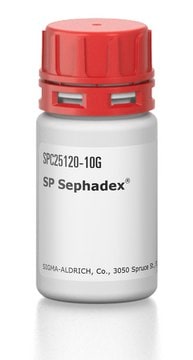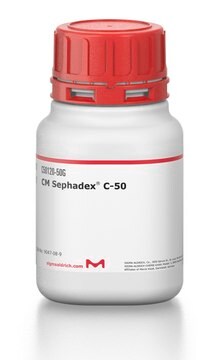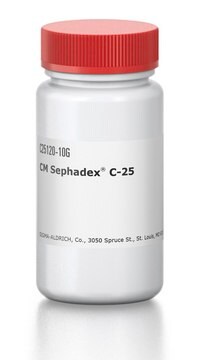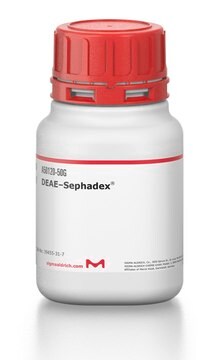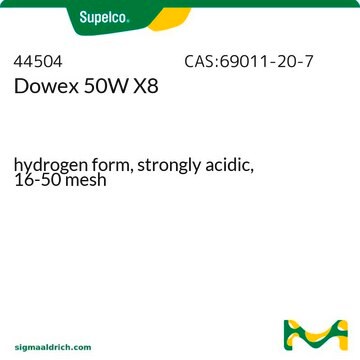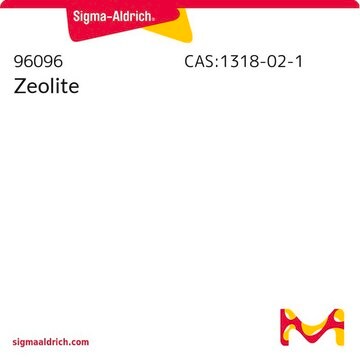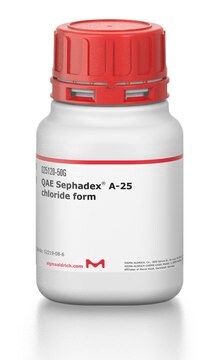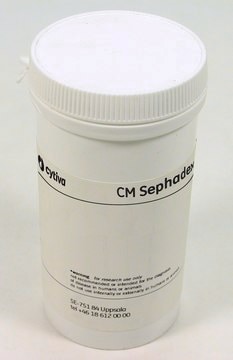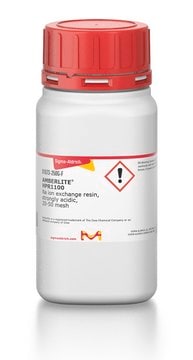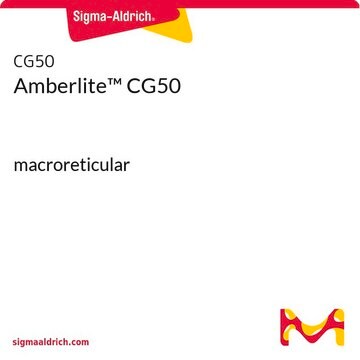SPC50120
SP Sephadex® C-50 sodium form
Synonym(s):
Sulfopropyl Sephadex®
Sign Into View Organizational & Contract Pricing
All Photos(2)
About This Item
Recommended Products
bead size
40-125 μm (dry)
Quality Level
pore size
200,000 exclusion limit (av. mol. wt.)
operating pH
2-10
capacity
2.0-2.8 meq/g ion exchange capacity
2.0-2.8 meq/g
compatibility
mode of use strong cation exchange chromatography
Related Categories
Application
SP Sephadex® is used in protein chromatography, ion exchange chromatography and cation exchange media. SP Sephadex® has been used to study human tumors as well as to discuss the biochemical basis for the use of mebendazole in the treatment of echinococcosis.
Legal Information
Sephadex is a registered trademark of Cytiva
Storage Class
11 - Combustible Solids
wgk_germany
WGK 3
flash_point_f
Not applicable
flash_point_c
Not applicable
ppe
Eyeshields, Gloves, type N95 (US)
Choose from one of the most recent versions:
Certificates of Analysis (COA)
Lot/Batch Number
Don't see the Right Version?
If you require a particular version, you can look up a specific certificate by the Lot or Batch number.
Already Own This Product?
Find documentation for the products that you have recently purchased in the Document Library.
Customers Also Viewed
Haemolytic factor from the crop of <I>Rhodnius prolixus</I>: Evidence and partial characterization.
de Azambuja, P., et al.
Journal of Insect Physiology, 29(11), 833-837 (1983)
S Cheley et al.
Protein engineering, 10(12), 1433-1443 (1998-05-23)
Staphylococcal alpha-hemolysin is a water soluble, monomeric, bacterial exotoxin, which forms heptameric pores in membranes. The rate determining step in assembly is the conversion of a heptameric prepore to the fully assembled pore in which the central glycine-rich domain of
Isolation and partial characterization of a porcine thyroglobulin-binding <I>Phaseolus vulgaris</I> L. lectin.
Bonorden, W.R., and Swanson, B.G.
Food Chemistry, 44(3), 227-233 (1992)
B G Wallace
The Journal of neuroscience : the official journal of the Society for Neuroscience, 10(11), 3576-3582 (1990-11-01)
Heparin and heparan sulfate have been shown to block nerve-induced acetylcholine-receptor (AChR) aggregation at developing neuromuscular junctions. We found that heparin, heparan sulfate, and a wide variety of other polyanions also inhibited agrin-induced AChR aggregation. The more highly charged the
A convenient large scale preparation of the EE isozyme of horse liver alcohol dehydrogenase.
D C Anderson et al.
Analytical biochemistry, 99(2), 392-398 (1979-11-01)
Our team of scientists has experience in all areas of research including Life Science, Material Science, Chemical Synthesis, Chromatography, Analytical and many others.
Contact Technical Service